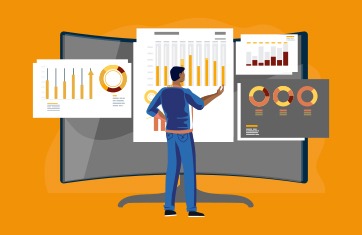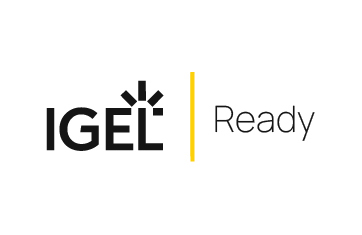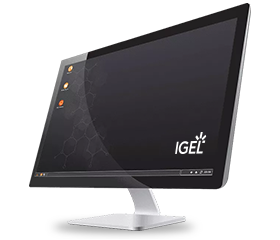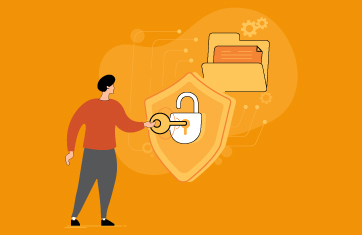Endpoint Monitoring
What is Endpoint Monitoring?
In IT, an endpoint is an internet-capable hardware device on a TCP/IP network. An endpoint serves as a connection point for communicating with a network or accessing a service, it is often a device such as a computer or smartphone. Beyond consumer devices such as laptops and phones, the term endpoint now also encompasses devices such as tablets, information screens, thin clients, printers and other specialized hardware, such as actuators, point of sale (POS) terminals and smart meters.
Endpoint monitoring involves the continuous observation and analysis of endpoint devices to ensure optimal performance, security, and compliance. It typically includes monitoring key metrics such as CPU usage, memory utilization, network traffic, and security events to detect issues, enforce policies, and protect against security threats at the endpoint level.
There are now a vast range of genres of endpoint monitoring tools, such as antivirus software, Endpoint Detection and Response (EDR) solutions, Data Loss Prevention (DLP) Solutions, Unified Endpoint Management (UEM) platforms, and Security Information and Event Management (SIEM) systems.
Endpoint Monitoring vs RMM
Endpoint monitoring is often considered a subset of the broader capabilities offered by RMM (Remote Monitoring and Management) software. Endpoint monitoring focuses specifically on endpoints, while RMM software provides a more comprehensive set of tools for managing and supporting various aspects of IT infrastructure remotely. In addition to endpoint monitoring, RMM software often includes features such as remote desktop control, patch management, software deployment, asset inventory, backup and recovery, and IT automation.
Modern challenges of Endpoint Monitoring
In earlier times, business IT setups were often relatively straightforward, comprising a handful of on-prem servers linked to a fleet of on-site personal computers or workstations. An on-site IT team was usually available to troubleshoot user issues face-to-face. Network sizes were modest, and configurations were manageable manually, with uncomplicated monitoring requirements.
However, the landscape has evolved significantly. Modern businesses and different industries now rely not only on physical PCs and servers but also on a diverse array of cloud-based virtual machines, digital workspaces and storage solutions. Working patterns have shifted with hybrid and work-from-home / anywhere now common.
More employees or service users who were never traditional PC users now rely on IT and devices to perform their roles, for example it is common for servers in restaurants to use a tablet endpoint or even a smart phone to take orders and even payments. In hospitals it is now common for patients to check-into clinics on endpoints that are touchscreens.
The prevalence of mobile devices adds another layer of complexity, as they continually traverse network boundaries. Furthermore, network configurations are in a constant state of flux, with devices frequently entering and leaving the network.
Given this dynamic environment, it becomes imperative to implement a centralized solution for endpoint monitoring and management. Such a solution automates the tasks involved in tracking, controlling, and securing the various types of endpoints present within a business's network, ensuring operational efficiency, user productivity and security.
What is the cost and ROI of Endpoint Monitoring?
Admins evaluate the cost-effectiveness of endpoint monitoring solutions and inquire about licensing models, subscription plans, and return on investment (ROI) metrics. Most organizations consider factors such as total cost of ownership (TCO), cost per endpoint, and potential cost savings from improved security and productivity.
What types of Endpoint Monitoring tool are available?
Endpoint monitoring tools can be categorized based on their functionality and the aspects of endpoint management and security they address. Here are several types of endpoint monitoring tools:
With many organizations monitoring diverse IoT endpoints such as security (CCTV) cameras and IoT devices, monitoring tools that support SNMP are widely used and SNMP remains a key monitoring protocol (see: What is SNMP & Why is SNMP Still Relevant | eG Innovations).
What are the security concerns around Endpoint Monitoring?
Security concerns around endpoint monitoring tools primarily revolve around data privacy, access control, and potential exploitation by malicious actors. Here are some key concerns:
To mitigate these concerns, organizations should implement security best practices such as encryption of sensitive data, strong access controls, regular security audits, patch management for endpoint agents, and compliance with relevant regulations such as GDPR or HIPAA. Additionally, transparent communication with employees about the purpose and scope of endpoint monitoring can help build trust and address privacy concerns.
Monitoring any authentication and components in use, such as Okta, Active Directory, or Entra ID (was Azure AD) is paramount in an endpoint monitoring strategy.
Advice on how to select SaaS monitoring technologies that do not compromise your IT landscape is provided in Should I Trust a SaaS Vendor or Product? | eG Innovations.
Many organizations leverage MITRE ATT&CK, a globally accessible knowledge base of adversary tactics and techniques based on real-world observations to harden their endpoint security strategies, see: Endpoint Denial of Service, Technique T1499 - Enterprise | MITRE ATT&CK®.






